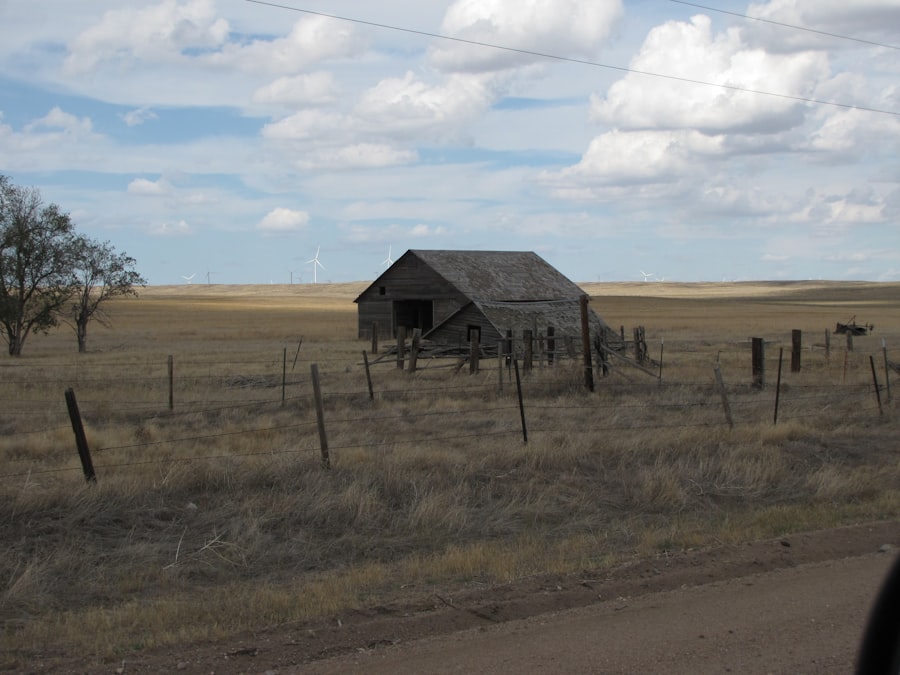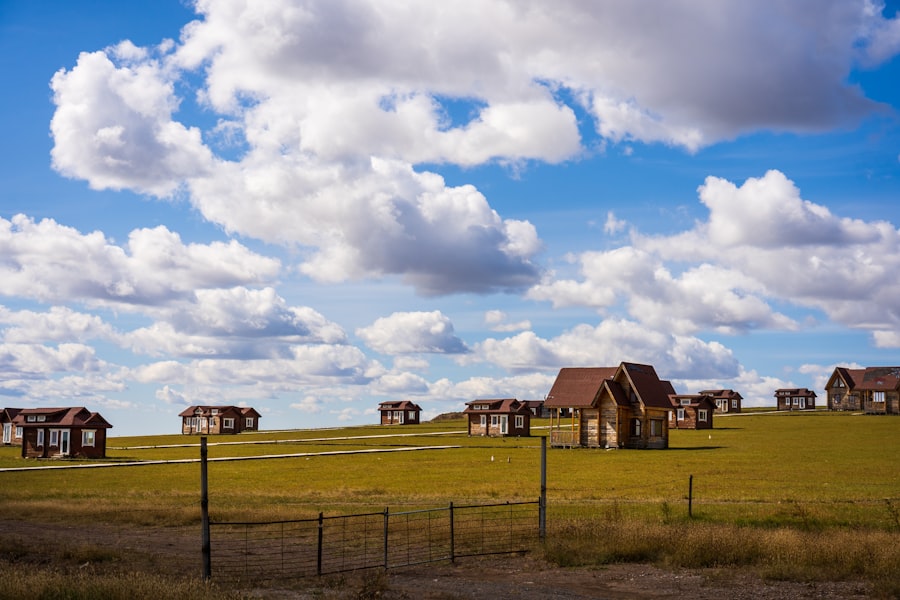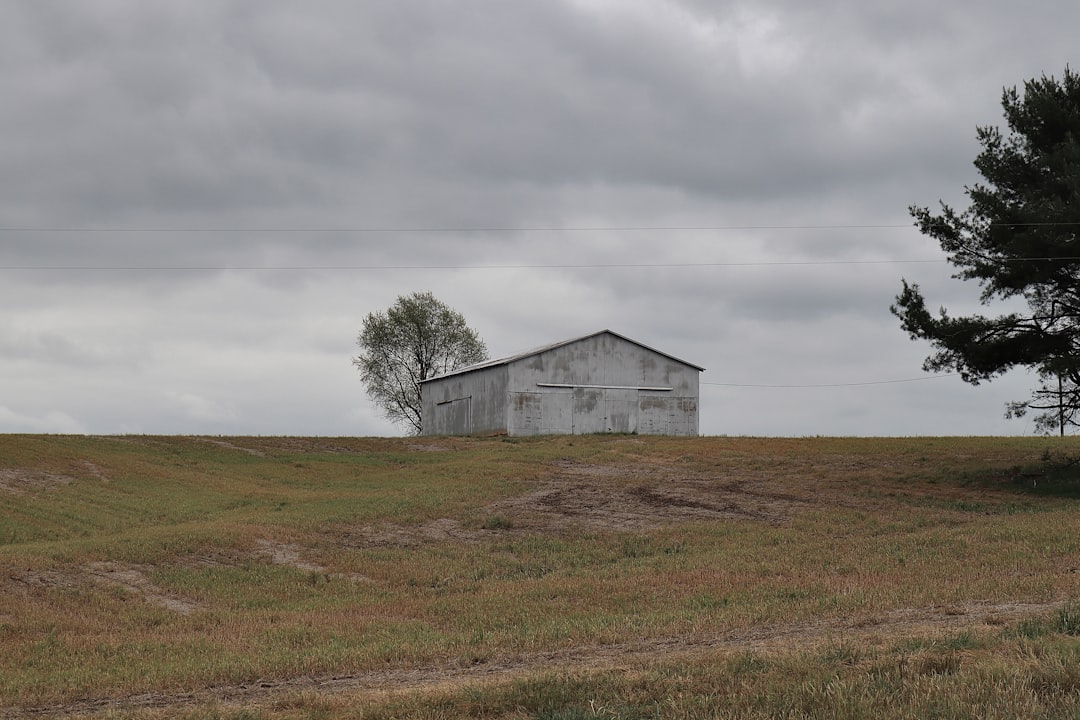The Great Plains, a vast expanse of flatlands stretching across the central United States and parts of Canada, has long been home to diverse communities that have thrived in its unique environment. However, these communities are increasingly facing the threat of disappearance. The vanishing of these towns and settlements is not merely a demographic shift; it represents a profound loss of cultural heritage, social fabric, and historical significance.
As the landscape changes, so too do the stories and identities of the people who have called this region home. Understanding the factors contributing to this decline is essential for grasping the broader implications for American society and culture.
Yet, as modernity encroaches upon these areas, many small towns are witnessing a stark decline in population and economic viability. The once-bustling main streets filled with local businesses are now often lined with boarded-up storefronts and empty homes. This article aims to explore the history, challenges, and potential futures of these vanishing communities, shedding light on their significance and the urgent need for preservation efforts.
Key Takeaways
- The Great Plains region has seen a decline in its communities over the years, leading to the vanishing of once-thriving towns and settlements.
- Factors such as depopulation, economic changes, and environmental challenges have contributed to the disappearance of Great Plains communities.
- Industrialization and modernization have had a significant impact on the decline of Great Plains communities, leading to changes in the way of life and economic opportunities.
- Agriculture has played a role in the decline of Great Plains communities, with changes in farming practices and economic shifts affecting the viability of rural settlements.
- Efforts to preserve and revitalize Great Plains communities are underway, aiming to maintain the cultural and social significance of these vanishing towns and settlements.
The History and Decline of Great Plains Communities
The history of Great Plains communities is rich and varied, marked by waves of migration, settlement, and adaptation. Initially inhabited by Native American tribes such as the Lakota, Cheyenne, and Pawnee, the region saw an influx of European settlers in the 19th century.
The Homestead Act of 1862 played a pivotal role in this expansion, granting land to those willing to cultivate it. As a result, vibrant communities began to flourish, each with its own unique identity shaped by the challenges and triumphs of frontier life. However, the decline of these communities began in earnest during the mid-20th century.
Economic shifts, including the mechanization of agriculture and the rise of industrial farming practices, led to a significant reduction in the labor force needed for traditional farming. As larger agribusinesses took over, many small family farms were unable to compete, resulting in a mass exodus from rural areas to urban centers in search of better opportunities. This migration not only depleted the population but also eroded the social structures that had sustained these communities for generations.
Factors Contributing to the Disappearance of Great Plains Communities

Several interrelated factors contribute to the ongoing disappearance of Great Plains communities. One primary factor is economic instability. As industries evolve and adapt to new technologies, many small towns find themselves unable to keep pace with the rapid changes occurring in the economy.
The decline of traditional industries such as agriculture and manufacturing has left many residents without viable employment options. Consequently, younger generations are often compelled to leave their hometowns in search of better job prospects elsewhere. Another significant factor is demographic change.
The aging population in many rural areas has led to a shrinking workforce and a lack of new residents to revitalize these communities. Young people are increasingly drawn to urban environments that offer more diverse opportunities for education and employment. This demographic shift not only impacts the economy but also alters the social dynamics within these towns, leading to a loss of community cohesion and cultural continuity.
The Impact of Industrialization and Modernization on Great Plains Communities
| Metrics | Impact |
|---|---|
| Population Growth | Increased population due to migration for industrial jobs |
| Economic Changes | Shift from agriculture to industrial and manufacturing jobs |
| Urbanization | Growth of cities and towns due to industrial development |
| Infrastructure Development | Construction of railroads, roads, and other transportation networks |
| Social Changes | Shift in traditional community structures and values |
Industrialization has had a profound impact on Great Plains communities, fundamentally altering their economic landscape and social fabric. The advent of large-scale farming operations has transformed agriculture from a family-oriented endeavor into an industrial enterprise. This shift has resulted in fewer jobs available for local residents, as advanced machinery and technology have replaced traditional farming methods that once required significant human labor.
Moreover, modernization has led to changes in lifestyle and values within these communities. As residents become more connected to urban centers through technology and transportation, they often adopt different cultural norms and practices that can dilute local traditions. The once-close-knit relationships that defined small-town life are increasingly replaced by a more transient population that lacks deep-rooted connections to the community.
This erosion of social ties can lead to feelings of isolation and disconnection among remaining residents.
Environmental Challenges Faced by Great Plains Communities
Environmental challenges also play a critical role in the decline of Great Plains communities. The region is particularly vulnerable to climate change, experiencing extreme weather events such as droughts, floods, and severe storms that can devastate agricultural production. These environmental stresses not only threaten food security but also impact local economies reliant on farming and ranching.
Additionally, issues such as soil degradation and water scarcity have become increasingly pressing concerns for residents. Unsustainable agricultural practices have led to diminished soil health, making it more difficult for farmers to maintain productive crops. As water resources become scarcer due to over-extraction and changing climate patterns, communities face tough decisions about how to allocate these vital resources.
The cumulative effect of these environmental challenges can exacerbate economic decline and further drive residents away from their homes.
The Role of Agriculture in the Decline of Great Plains Communities

Agriculture has historically been the backbone of Great Plains communities, providing livelihoods and shaping local culture. However, as agricultural practices have evolved, so too have the dynamics within these communities. The rise of corporate farming has led to a concentration of land ownership and resources in the hands of a few large agribusinesses, leaving small farmers struggling to survive.
This shift has resulted in significant economic disparities within rural areas. Many small farmers find it increasingly difficult to compete with larger operations that benefit from economies of scale and advanced technology. As a result, family farms are often sold or abandoned, leading to further depopulation as families leave in search of more sustainable livelihoods elsewhere.
The decline of agriculture as a viable economic foundation has profound implications for community identity and cohesion.
The Cultural and Social Significance of Vanishing Great Plains Communities
The vanishing communities of the Great Plains hold immense cultural and social significance that extends beyond their geographic boundaries. These towns are repositories of history, embodying stories of resilience, innovation, and community spirit that have shaped American identity. The traditions, customs, and values passed down through generations reflect a way of life that is increasingly at risk of being lost forever.
Moreover, these communities often serve as vital hubs for social interaction and support networks. Local events such as fairs, festivals, and gatherings foster connections among residents and create a sense of belonging. As these communities dwindle, so too does the opportunity for individuals to engage with one another in meaningful ways.
The loss of social cohesion can lead to increased feelings of isolation among remaining residents, further exacerbating the challenges faced by these towns.
Efforts to Preserve and Revitalize Great Plains Communities
In response to the challenges facing Great Plains communities, various efforts have emerged aimed at preservation and revitalization. Grassroots organizations and local initiatives are working tirelessly to promote economic development while honoring cultural heritage. These efforts often focus on supporting local businesses, encouraging tourism, and fostering community engagement through events that celebrate regional history.
Additionally, some communities are exploring innovative approaches to sustainability by embracing alternative agricultural practices or diversifying their economies beyond traditional farming. By investing in renewable energy projects or promoting local arts and crafts, these towns aim to create new opportunities for residents while preserving their unique identities. Collaborative efforts among community members can lead to creative solutions that breathe new life into struggling towns.
The Future of Great Plains Communities
The future of Great Plains communities remains uncertain but not without hope. While many towns face significant challenges that threaten their existence, there is also a growing awareness of the importance of preserving these unique places. As conversations around sustainability and community resilience gain traction, there is potential for revitalization efforts to take root.
Moreover, younger generations are increasingly recognizing the value of their heritage and are seeking ways to reconnect with their roots. This renewed interest can lead to innovative approaches that blend tradition with modernity, creating vibrant communities that honor their past while embracing new possibilities for growth. By fostering collaboration among residents, local governments, and organizations dedicated to preservation, there is potential for a brighter future for Great Plains communities.
Case Studies of Vanishing Communities in the Great Plains
Examining specific case studies can provide valuable insights into the complexities surrounding vanishing communities in the Great Plains. For instance, towns like Hoxie, Kansas, have experienced significant population decline due to economic shifts and changing demographics. Once a thriving agricultural hub, Hoxie has seen its population dwindle as younger residents leave for urban areas in search of better opportunities.
Conversely, some towns have successfully implemented revitalization strategies that have breathed new life into their communities. For example, Red Cloud, Nebraska, has embraced its rich cultural heritage by promoting tourism centered around its historical significance as the home of author Willa Cather. By leveraging its unique identity and fostering community engagement through events like arts festivals and historical reenactments, Red Cloud has managed to attract visitors while instilling pride among its residents.
The Importance of Preserving Great Plains Communities
The vanishing communities of the Great Plains represent more than just empty buildings or declining populations; they embody a rich tapestry of history, culture, and human experience that deserves recognition and preservation. As these towns face unprecedented challenges from economic shifts, environmental pressures, and demographic changes, it becomes increasingly vital to advocate for their survival. Preserving these communities is not merely an act of nostalgia; it is an acknowledgment of their contributions to American identity and culture.
By investing in revitalization efforts that honor local heritage while embracing innovation, there is potential for these towns to thrive once again. Ultimately, safeguarding the stories and legacies embedded within Great Plains communities ensures that future generations will continue to draw inspiration from their rich past while forging new paths forward.
The Great Plains have long been known for their vast landscapes and rural communities, but in recent years, many of these communities have been facing the threat of vanishing. This phenomenon is not unique to the Great Plains, as similar trends can be observed in other rural areas across the country. An insightful article that delves into the challenges and changes faced by these communities can be found on MyGeoQuest. This article explores the socio-economic factors contributing to the decline of small towns and the efforts being made to revitalize them. For more information, you can read the full article by visiting this link.
WATCH NOW! Why America’s Heartland Is Disappearing Fast
FAQs
What are the Great Plains vanishing communities?
The Great Plains vanishing communities refer to the small towns and rural areas in the Great Plains region of the United States that are experiencing depopulation and economic decline.
What factors are contributing to the vanishing of these communities?
Several factors contribute to the vanishing of these communities, including outmigration of young people, declining agricultural opportunities, lack of economic diversification, and the consolidation of services in larger towns and cities.
How is the depopulation affecting these communities?
Depopulation is leading to the closure of businesses, schools, and healthcare facilities, as well as a loss of community infrastructure and social cohesion. It also impacts the tax base and the ability to provide essential services.
What are some potential solutions to address the vanishing communities in the Great Plains?
Potential solutions include economic diversification, investment in infrastructure and services, support for small businesses and agriculture, and initiatives to attract and retain residents, such as affordable housing and quality of life improvements.
What are the cultural and historical implications of these vanishing communities?
The vanishing communities in the Great Plains hold significant cultural and historical value, as they often represent the pioneering spirit of early settlers and the heritage of indigenous peoples. Their disappearance could lead to the loss of unique traditions, stories, and ways of life.
